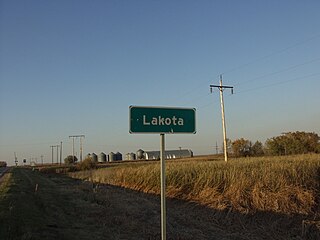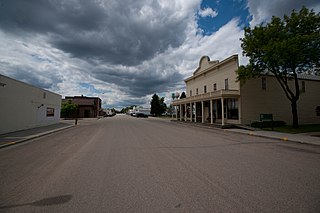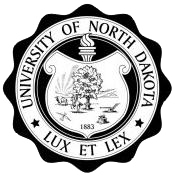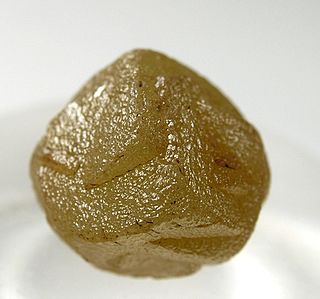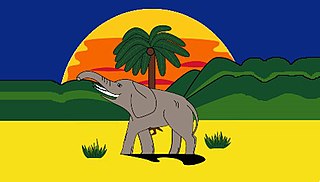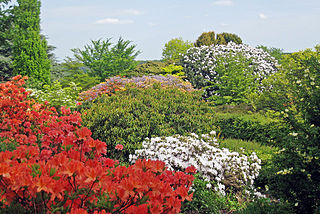
Paranthropus is a genus of extinct hominins that lived between 2.6 and 1.1 million years ago. Also known as robust australopithecines, they were bipedal hominids probably descended from the gracile australopithecine hominids (Australopithecus) 2.7 million years ago.

Richard Erskine Frere Leakey FRS is a Kenyan paleoanthropologist, conservationist, and politician. Leakey has held a number of official positions in Kenya, mostly in institutions of archaeology and wildlife conservation. He has been Director of the National Museum of Kenya and head of the Kenyan Wildlife Service, and he founded the NGO WildlifeDirect.

The Oldowan is the earliest widespread stone tool archaeological industry (style) in prehistory. These early tools were simple, usually made with one or a few flakes chipped off with another stone. Oldowan tools were used during the Lower Paleolithic period, 2.6 million years ago up until 1.7 million years ago, by ancient hominids across much of Africa, South Asia, the Middle East and Europe. This technological industry was followed by the more sophisticated Acheulean industry.
Paleoanthropology or paleo-anthropology is a branch of archaeology with a human focus, which seeks to understand the early development of anatomically modern humans, a process known as hominization, through the reconstruction of evolutionary kinship lines within the family Hominidae, working from biological evidence and cultural evidence.

Mary Douglas Leakey, FBA was a British paleoanthropologist who discovered the first fossilised Proconsul skull, an extinct ape which is now believed to be ancestral to humans. She also discovered the robust Zinjanthropus skull at Olduvai Gorge in Tanzania, eastern Africa. For much of her career she worked with her husband, Louis Leakey, at Olduvai Gorge, where they uncovered fossils of ancient hominines and the earliest hominins, as well as the stone tools produced by the latter group. Mary Leakey developed a system for classifying the stone tools found at Olduvai. She discovered the Laetoli footprints, and at the Laetoli site she discovered hominin fossils that were more than 3.75 million years old.

Paranthropus boisei or Australopithecus boisei was an early hominin, described as the largest of the genus Paranthropus. It lived in Eastern Africa during the Pleistocene epoch from about 2.4 until about 1.4 million years ago.
Kamoya Kimeu, is one of the world's most successful fossil collectors who, together with paleontologists Meave Leakey and Richard Leakey, is responsible for some of the most significant paleoanthropological discoveries. Kimeu found a Homo habilis skull known as KNM ER 1813, an almost complete Homo erectus skeleton named KNM-WT 15000 or Turkana Boy, and in 1964 the jaw of a Paranthropus boisei skull known as the Peninj Mandible. He has two fossil primates named after him: Kamoyapithecus hamiltoni and Cercopithecoides kimeui.

OH 5 is a fossilized cranium and the holotype of the species Paranthropus boisei. It was discovered in Olduvai Gorge, Tanzania, by archaeologist-paleontologist Mary Leakey in 1959. Her husband and fellow scientist Louis Leakey initially classified the hominid as Zinjanthropus boisei and thought that it was an early ancestor of modern humans that lived approximately 2 million years ago. However, this contention was later withdrawn because of its robust australopithecine features and the discovery of Homo habilis soon thereafter.
The Trimates, sometimes called Leakey's Angels, is a name given to three women — Jane Goodall, Dian Fossey, and Birutė Galdikas — chosen by anthropologist Louis Leakey to study hominids in their natural environments. They studied chimpanzees, gorillas and orangutans respectively.
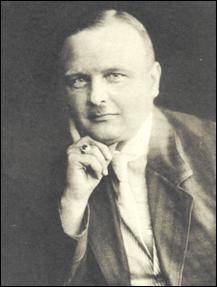
Hans Gottfried Reck was a German volcanologist and paleontologist. In 1913 he was the first to discover the ancient skeleton of a human in the Olduvai Gorge, in what is now Tanzania. He collaborated with Louis Leakey in a return expedition to the site in 1931.

Kariandusi prehistoric site is an archaeological site in Kenya. Located on the southeastern edge of the Great Rift Valley and on Lake Elmenteita, Kariandusi is an African Early Stone Age site dating to approximately 1 million years ago.
Sydney Hobart Ball was an American geologist and mining engineer. Educated at the University of Wisconsin, Ball spent his early career in public service. In 1907 he left the US to prospect for minerals in the Belgian Congo for the Forminière company. Ball discovered the first part of the Congo-Angola diamond field, which proved a valuable source of revenue. Returning to America, Ball established a private practice and acted as consultant to a number of public bodies.
Emory Delmont Alvord was an American missionary and agriculturalist. Known for his missionary work in Rhodesia, Alvord's demonstrative methods are credited with revolutionising African agriculture.
Jerome Lewellyn Babe was an American diamond miner and inventor.
George Blowers was an American banker. A Harvard graduate, he became governor of the state banks of Liberia, Ethiopia and Saudi Arabia. During his career he was responsible for introducing two new currencies and represented Ethiopia at the Bretton Woods Conference.
Wolfrid Rudyerd Boulton was an American ornithologist who worked extensively in Africa. Boulton held positions at the American Museum of Natural History and the Carnegie Museum of Natural History and traveled widely on expeditions to Africa. With his first wife, ethnomusicologist Laura Boulton, he made the first recordings of African tropical bird calls. Boulton was recruited into the Office of Strategic Services (OSS) during the Second World War because of his knowledge of Africa and his experience in foreign travel. He was responsible for monitoring the supply of uranium ore from the Belgian Congo for the Manhattan Project. Boulton transferred to the Central Intelligence Agency (CIA) in 1947 and resigned in 1958.
Alia Gurtov is an American paleoanthropologist who is known for being one of the six Underground Astronauts of the Rising Star Expedition.
